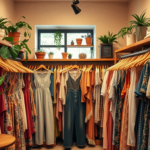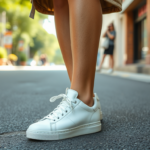
Identifying the authenticity of a diamond can be both fascinating and nerve-wracking. With the high value placed on these precious gems, knowing whether your diamond is the real deal is crucial. A handy flashlight might not seem like a sophisticated tool, but it can be surprisingly effective in a pinch. The way a diamond interacts with light is unique due to its high refractive index, and using a flashlight to observe this interaction is a simple method to hint at its authenticity. However, this article will not just stop at the flashlight test; we’ll explore various easy-to-perform home tests and delve into professional methods that should also be considered for a definitive verification.
Genuine diamonds have captivating brilliance and fire that are instantly recognizable under normal circumstances. When exposed to a strong light source such as a flashlight, a real diamond reflects light in exceptional ways, with the light dispersing into a rainbow spectrum and the diamond’s structure causing a unique sparkle. This phenomenon is attributed to the diamond’s high refractive index and is what diamond buyers should know when assessing their stones.
The Flashlight Test: A Step-by-Step Guide
Preparing for the Flashlight Test
There are a couple of considerations you need to keep in mind before conducting the flashlight test:
- Selecting the Right Flashlight: A standard flashlight will suffice, but one that emits a strong, direct beam of white light is ideal. Colored light should be avoided as it could also alter the perception of the diamond’s reflections.
- Preparing the Diamond: The diamond in question should be clean. Any smudges or debris can affect how light reflects off the stone, thereby skewing your results.

Conducting the Test
To perform the test, follow these simple steps:
- Place the diamond face-up on a flat surface.
- Hold the flashlight so it shines directly onto the diamond. The light should not be at an angle as it might not give the most accurate result.
- Observe how the light plays off the diamond. In genuine diamonds, light reflects in a unique pattern known as “brilliance,” and you might also notice colorful light refractions known as “fire.”
Analyzing the Results
When analyzing the results, keep in mind that what you’re looking for is the quality and pattern of the sparkle. Real diamonds typically reflect a gray and white light known as “brilliance,” but they will also show flashes of color or “fire,” especially against a white background. The way a diamond refracts light should also be distinct, with sharp, quick flashes rather than slow and rainbow-like reflections that are characteristic of synthetic moissanite.
Other Home Methods for Testing Diamond Authenticity
The Water Test
Drop the stone into a glass filled with water. Due to a real diamond’s high density, it should sink to the bottom. If it floats at the surface or midway, it’s likely not a real diamond.
The Fog Test
Try fogging up the diamond like you would a mirror. If it clears up within a second or two, it could be real. Genuine diamonds dissipate heat quickly, which is why they do not stay fogged for long.
The Heat Test
Diamonds are known to disperse heat rapidly. Heating the stone for about 30 seconds and then dropping it into cold water could reveal its authenticity. While a real diamond would not react, many fake materials will crack.
All these methods are indicators, but they are not foolproof. For example, the heat test could damage a real diamond if there are inclusions or if the stone has been treated. That’s why professional assessments are vital for a definitive answer.
Professional Diamond Verification Techniques
Certification and Appraisals
Certification from reputable organizations like the Gemological Institute of America (GIA) or the American Gem Society (AGS) is invaluable when verifying a real diamond.

Advanced Equipment Used by Professionals
Gemologists use advanced tools for further tests. Here are a few:
- Loupes or microscopes for detailed examination of the stone
- Spectroscopes to study the stone’s absorption of light
- Thermal conductivity probes that distinguish diamond from moissanite
This first portion of the article ensures that the reader has a foundational understanding of simple tests to preliminarily assess their diamond’s authenticity. Getting these assessments right could be the difference between valuing a potential treasure or misjudging a stone’s real worth. While these home tests are helpful, they are not definitive. For guaranteed results, professional verification is recommended. Remember, when it comes to diamonds, a careful and educated approach will ensure your peace of mind.
Tips for Purchasing Genuine Diamonds
When you’re in the market for a genuine diamond, it’s essential to be well-informed to ensure you’re making a wise investment. Here are some tips to keep you guided:
| Method | Description |
|---|---|
| 1. The Fog Test | Hold the diamond in front of your mouth and breathe on it. A real diamond disperses heat quickly and thus should not fog up for long. If it does, it may be a fake. |
| 2. The Refraction Test | Place the diamond flat side down on a piece of newspaper. If you can read the text through the stone, it’s likely a fake. Real diamonds refract light in a way that makes it difficult to see through them. |
| 3. The Brilliance Test | Turn off the lights and shine a flashlight through the diamond. A real diamond will sparkle with colored light, known as brilliance. Fake diamonds may lack this colorful sparkle. |
| 4. The Loupe Test | Use a jeweler’s loupe to examine the diamond closely. Real diamonds typically have small imperfections called inclusions, while fake ones may appear too perfect. |
| 5. The Weight Test | Weigh the diamond and compare it to its stated carat weight. While this won’t determine authenticity on its own, a significantly different weight could indicate a fake. |
Researching the Seller’s Reputation
It’s critical to buy diamonds from reputable sellers. Take time to:
- Read reviews and testimonials from previous customers.
- Check for membership in professional jewelry associations, which often adhere to strict ethical standards.
Asking for a Diamond Certificate
Always ask for a diamond certification from recognized laboratories such as the GIA or AGS. Certificates provide:
- An unbiased assessment of the diamond’s characteristics.
- Proof of the stone’s authenticity and quality.
Understanding Diamond Quality Ratings
Educate yourself about the 4Cs – carat weight, cut, color, and clarity:
- Each of these factors greatly affects a diamond’s value and price.
- Understand that higher ratings in these categories denote better quality, and usually, a genuine diamond.
Keep these tips in mind, and you’re likely to make a purchase that’s worth your investment. Purchasing genuine diamonds with knowledge and caution ensures that you’re not swayed by deceptive practices.

Conclusion
Knowing how to tell if a diamond is real with a flashlight and other home methods can give you preliminary insights into a diamond’s authenticity. We’ve discussed the nuances of the flashlight test, water tests, fog tests, and even the riskier heat test. These methods could provide handy clues but should not be the sole basis for your judgment. For irrefutable confirmation of a diamond’s authenticity, professional evaluation with advanced equipment and expertise is indispensable. Whether you’re assessing a family heirloom or considering a new purchase, navigating the sparkling world of diamonds with a bit of knowledge and skepticism is always advised.
Remember, while there’s a particular thrill in discovering the nature of a diamond through DIY tests, nothing replaces the assurance that comes with a professional’s seal of approval. In the realm of diamonds, where every facet holds a story and value, equipping yourself with the right tools and knowledge is as precious as the gems themselves.
FAQs
Q1: How accurate is the flashlight test for identifying real diamonds?
A1: The flashlight test is not entirely foolproof but it can provide helpful indications of authenticity. Genuine diamonds have unique properties that may be observable when exposed to a concentrated light source. However, some lab-created diamonds and other high-quality fakes can exhibit similar properties, so the test should not be used as the only method of verification.
Q2: Can synthetic moissanite pass the flashlight test like a genuine diamond?
A2: Yes, synthetic moissanite can sometimes pass the flashlight test because it also refracts light in a similar manner to real diamonds. Moissanite is doubly refractive and can give off a similar sparkle, which is why secondary tests or professional assessments are recommended for accurate differentiation.
Q3: Are there any diamond simulants that might not sink in water tests?
A3: Yes, some diamond simulants such as cubic zirconia have a lower density than genuine diamonds and might not sink as quickly in water tests. This is one of the reasons why this test by itself is not completely reliable for determining diamond authenticity.
Q4: Why does a real diamond not fog up during the fog test?
A4: Real diamonds dissipate heat quickly, which is an attribute of their strong thermal conductivity. When a diamond is exposed to heat, such as the warmth of your breath during the fog test, it does not retain the heat or moisture, resulting in the fog dissipating swiftly.
Q5: Is it safe to perform the heat test on diamonds at home?
A5: Performing the heat test at home is not recommended as it could potentially damage the diamond, especially if it has any inclusions or has been treated. Additionally, a real diamond might not react to the sudden temperature change, but using such a method without proper knowledge can be risky and does not guarantee accurate results.




